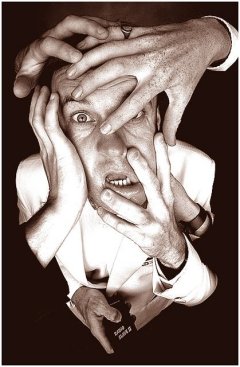
For decades, scientists have known that eminently creative individuals have a much higher rate of manic depression, or bipolar disorder, than does the general population. But few controlled studies have been done to build the link between mental illness and creativity. Now, Stanford researchers Connie Strong and Terence Ketter, MD, have taken the first steps toward exploring the relationship.
Using personality and temperament tests, they found healthy artists to be more similar in personality to individuals with manic depression than to healthy people in the general population. “My hunch is that emotional range, having an emotional broadband, is the bipolar patient’s advantage,” said Strong. “It isn’t the only thing going on, but something gives people with manic depression an edge, and I think it’s emotional range.”
Strong is a research manager in the Department of Psychiatry and Behavioral Science’s bipolar disorders clinic and a doctoral candidate at the Pacific Graduate School. She is presenting preliminary results during a poster presentation today (May 21) at the annual meeting of the American Psychiatric Association Meeting in Philadelphia.
The current study is groundbreaking for psychiatric research in that it used separate control groups made up of both healthy, creative people and people from the general population.
Researchers administered standard personality, temperament and creativity tests to 47 people in the healthy control group, 48 patients with successfully treated bipolar disorder and 25 patients successfully treated for depression.
Preliminary analysis showed that people in the control group and recovered manic depressives were more open and likely to be moody and neurotic than healthy controls. Moodiness and neuroticism are part of a group of characteristics researchers are calling “negative-affective traits” which also include mild, nonclinical forms of depression and bipolar disorder.
Though the data are preliminary, they provide a roadmap for psychiatric researchers looking to solve the genius/madness paradox depicted in the movie A Beautiful Mind, which tells the story of Nobel Laureate John Nash. The existing data need further review, Strong said. “And, we need to expand this to other groups,” he said. How mood influences the performance of artists and genius scientists will be the subject of future research at Stanford. “We need to better understand the emotional side of what they do,” Strong said.


















Comments are closed.